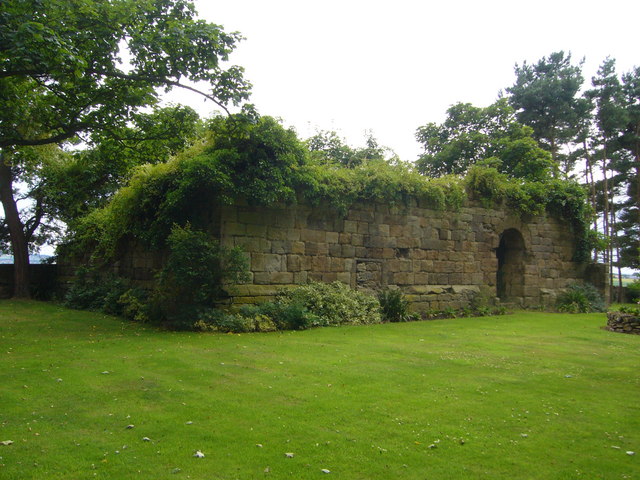Elphinstone Tower (East Lothian) on:
[Wikipedia]
[Google]
[Amazon]
 Elphinstone Tower is a ruined 13th–15th century
Elphinstone Tower is a ruined 13th–15th century
 Elphinstone Tower is a ruined 13th–15th century
Elphinstone Tower is a ruined 13th–15th century keep
A keep (from the Middle English ''kype'') is a type of fortified tower built within castles during the Middle Ages by European nobility. Scholars have debated the scope of the word ''keep'', but usually consider it to refer to large towers in c ...
, about south east of Tranent
Tranent is a town in East Lothian (formerly Haddingtonshire), in the south-east of Scotland. The town lies 6 miles from the boundary of Edinburgh, and 9.1 miles from the city centre. It lies beside the A1 road, the A1 runs through the parish ...
, East Lothian
East Lothian (; sco, East Lowden; gd, Lodainn an Ear) is one of the 32 council areas of Scotland, as well as a historic county, registration county and lieutenancy area. The county was called Haddingtonshire until 1921.
In 1975, the histo ...
, Scotland
Scotland (, ) is a country that is part of the United Kingdom. Covering the northern third of the island of Great Britain, mainland Scotland has a border with England to the southeast and is otherwise surrounded by the Atlantic Ocean to the ...
,Coventry, Martin (1997) ''The Castles of Scotland''. Goblinshead. p.172 and west of the village of Elphinstone, East Lothian.
History
The Elphinstone family owned the lands from the 13th century. The tower was commenced in the 13th century, but not finished until the 15th century. Soon after Sir Alexander Elphinstone was killed in 1435 it seems that the property passed to the Johnstones by marriage. This was the place where theProtestant
Protestantism is a Christian denomination, branch of Christianity that follows the theological tenets of the Reformation, Protestant Reformation, a movement that began seeking to reform the Catholic Church from within in the 16th century agai ...
reformer
A reformer is someone who works for reform.
Reformer may also refer to:
*Catalytic reformer, in an oil refinery
*Methane reformer, producing hydrogen
* Steam reformer
*Hydrogen reformer, extracting hydrogen
*Methanol reformer, producing hydrogen ...
George Wishart was brought from Ormiston to be handed over to Cardinal Beaton; he from thence taken to St Andrews
St Andrews ( la, S. Andrea(s); sco, Saunt Aundraes; gd, Cill Rìmhinn) is a town on the east coast of Fife in Scotland, southeast of Dundee and northeast of Edinburgh. St Andrews had a recorded population of 16,800 , making it Fife's fou ...
for trial
In law, a trial is a coming together of Party (law), parties to a :wikt:dispute, dispute, to present information (in the form of evidence (law), evidence) in a tribunal, a formal setting with the authority to Adjudication, adjudicate claims or d ...
and execution by burning
Combustion, or burning, is a high-temperature exothermic redox chemical reaction between a fuel (the reductant) and an oxidant, usually atmospheric oxygen, that produces oxidized, often gaseous products, in a mixture termed as smoke. Combusti ...
.
An adjoining mansion was built in 1600, but demolished in 1865. Because of subsidence
Subsidence is a general term for downward vertical movement of the Earth's surface, which can be caused by both natural processes and human activities. Subsidence involves little or no horizontal movement, which distinguishes it from slope move ...
from coal workings, much of the tower was demolished in 1955, and there has been further loss since then.
Structure
Elphinstone Tower formerly had three storeys, and a stone-flaggedparapet
A parapet is a barrier that is an extension of the wall at the edge of a roof, terrace, balcony, walkway or other structure. The word comes ultimately from the Italian ''parapetto'' (''parare'' 'to cover/defend' and ''petto'' 'chest/breast'). Whe ...
. It had a vaulted
In architecture, a vault (French ''voûte'', from Italian ''volta'') is a self-supporting arched form, usually of stone or brick, serving to cover a space with a ceiling or roof. As in building an arch, a temporary support is needed while ring ...
basement
A basement or cellar is one or more floors of a building that are completely or partly below the ground floor. It generally is used as a utility space for a building, where such items as the furnace, water heater, breaker panel or fuse box, ...
. The first floor comprised the hall
In architecture, a hall is a relatively large space enclosed by a roof and walls. In the Iron Age and early Middle Ages in northern Europe, a mead hall was where a lord and his retainers ate and also slept. Later in the Middle Ages, the gr ...
and the original kitchen, screened by a partition. There were private chambers in the upper floors. There were many rooms and stairs in the thickness of the wall. A peephole allowed the hall to be watched in secret.
By 1975 the north wall, with one doorway intact, remains to a height of but the south wall had completely disappeared.
See also
*Castles in Great Britain and Ireland
Castles have played an important military, economic and social role in Great Britain and Ireland since their introduction following the Norman invasion of England in 1066. Although a small number of castles had been built in England in the 10 ...
*List of castles in Scotland
This is a list of castles in Scotland. A castle is a type of fortified structure built primarily during the Middle Ages. Scholars debate the scope of the word "castle", but usually consider it to be the private fortified residence of a lord or ...
References